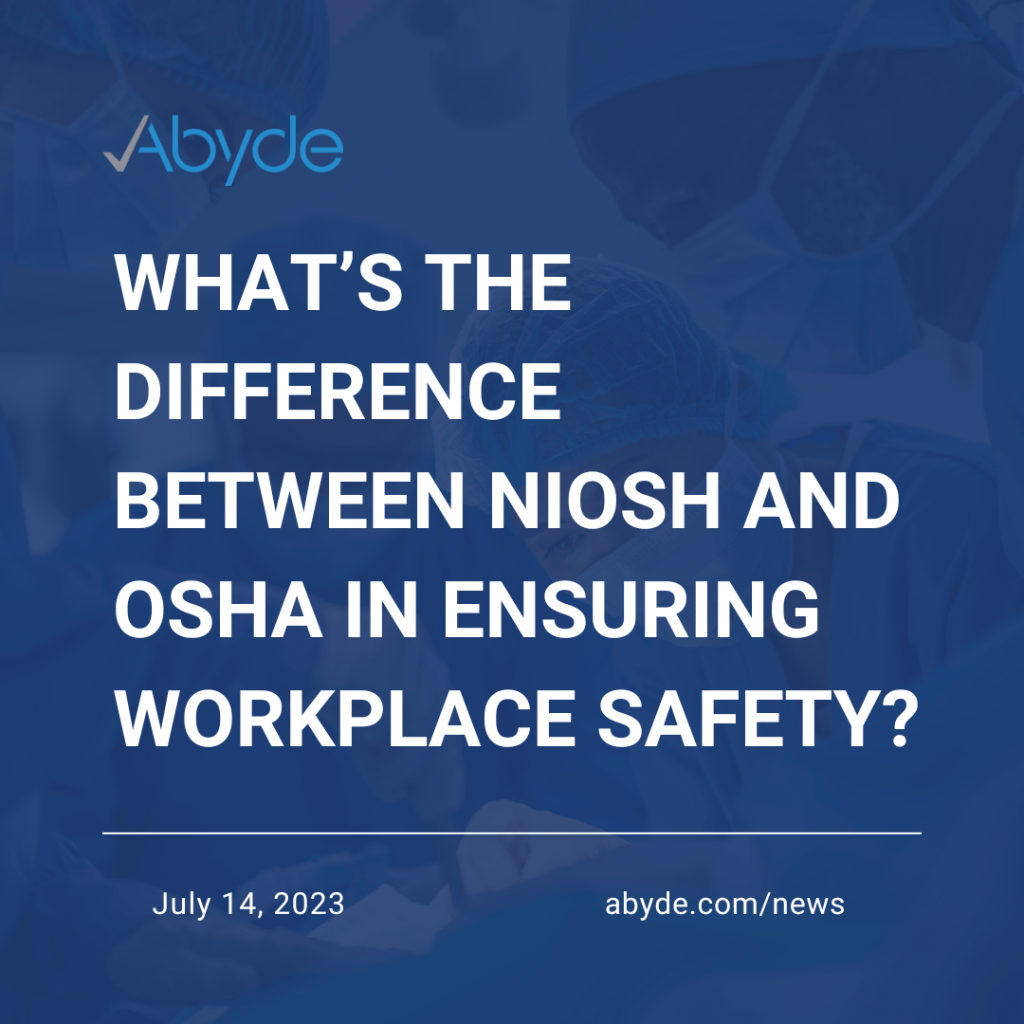July 14, 2023 When it comes to maintaining a safe and healthy work environment, two prominent agencies play a vital role in the United States: the National Institute for Occupational Safety and Health (NIOSH) and the Occupational Safety and Health Administration (OSHA). While their goals align closely, it’s essential to understand the differences between these agencies and their respective roles. Read along to dive into the dissimilarities between NIOSH and OSHA, focusing on NIOSH’s significance and its relevance to healthcare practices. NIOSH: A Sister Agency with Great Training Resources and Health Hazard Evaluations: NIOSH, a part of the Centers for Disease Control and Prevention (CDC), is often considered the sister agency to OSHA. It is responsible for conducting research, providing training resources, and making recommendations to improve occupational safety and health across various industries. One of NIOSH’s key functions is running Health Hazard Evaluations (HHEs), which involve investigating potential workplace hazards and providing recommendations for prevention and control. Certification of PPE, Respirators, and Exposure Limits: NIOSH is critical in ensuring the efficacy and safety of personal protective equipment (PPE) and respirators. It certifies these products to meet specific standards, validating their ability to protect workers from occupational hazards. Additionally, NIOSH establishes and revises exposure limits for various substances to safeguard workers’ health and minimize the risks associated with exposure to harmful agents. Interactions between NIOSH and OSHA: While NIOSH focuses on research, recommendations, and training, OSHA primarily enforces workplace safety regulations and standards. Although they operate independently, NIOSH and OSHA frequently collaborate and share information to enhance workplace safety. NIOSH’s research and recommendations often contribute to developing and revising OSHA’s standards, providing a scientific basis for regulations. NIOSH’s Relevance to Healthcare Practices: NIOSH’s expertise is highly relevant to healthcare practices due to the unique occupational hazards healthcare workers face. From exposure to infectious diseases to chemical and biological threats, healthcare professionals work in environments where safety is paramount. NIOSH provides valuable resources, guidelines, and research findings specifically tailored to the healthcare industry, aiming to protect healthcare workers and ensure their well-being. The Importance of ANSI (Laser Standards): Apart from NIOSH and OSHA, the American National Standards Institute (ANSI) also plays a crucial role in workplace safety. ANSI develops and publishes voluntary consensus standards for various industries, including laser safety. These standards provide guidance on the safe use of lasers, ensuring protection against potential hazards such as eye injuries and skin burns. Adhering to ANSI’s laser standards is essential for organizations to maintain a safe working environment. IDLH: Not an Organization but a Standard: It’s important to note that IDLH (Immediately Dangerous to Life or Health) is not an organization but a standard used to define hazardous conditions that pose an immediate threat to human life or health. NIOSH establishes IDLH values for various substances, helping organizations identify situations where respiratory protection and prompt action are necessary to prevent serious harm to workers. NIOSH and OSHA are two distinct but interconnected agencies that are vital in promoting workplace safety in the United States. While NIOSH focuses on research, recommendations, and training, OSHA’s primary responsibility is enforcing regulations and standards. NIOSH’s expertise and resources, such as its training materials, Health Hazard Evaluations, and certifications of PPE and respirators, make it an essential agency for maintaining a safe work environment. Healthcare practices, in particular, greatly benefit from NIOSH’s tailored guidelines and research findings. By understanding the distinctions between NIOSH and OSHA, organizations can leverage the strengths of both agencies to ensure the well-being of their workers and foster a culture of safety.
